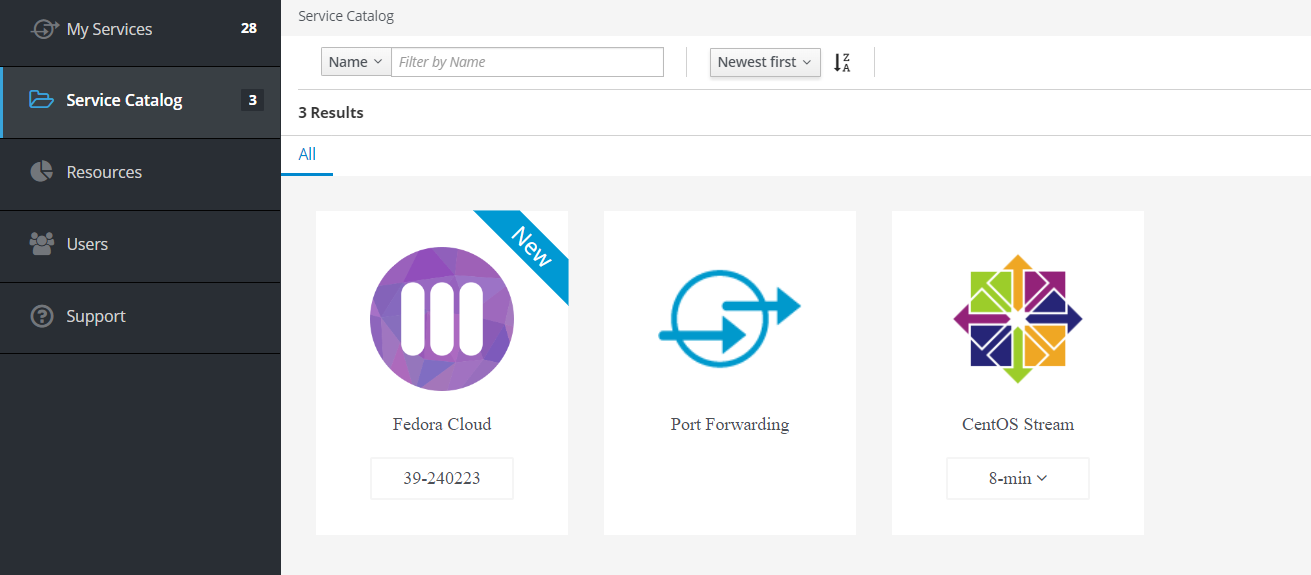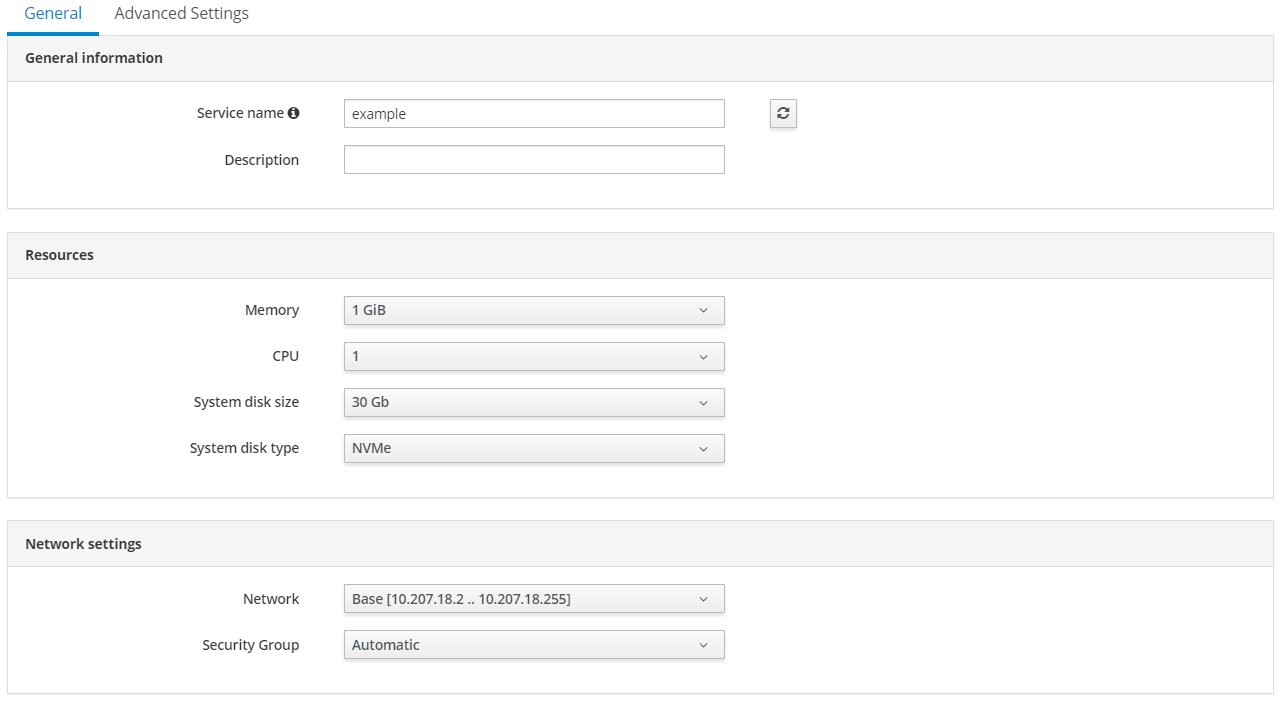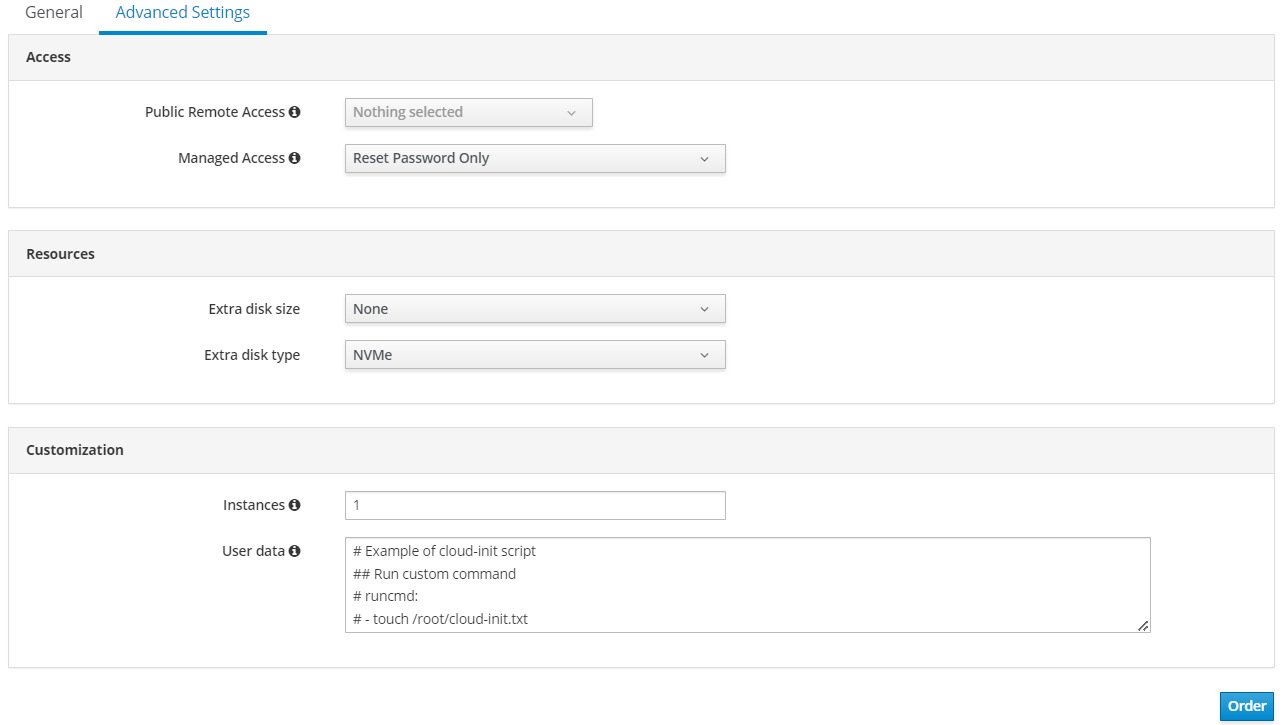Provisioning V2
For all new VM images, such as Centos Stream 9 and Fedora Cloud 39, a new service ordering dialog Provisioning V2 is used.
Selecting a Service¶
To begin, you need to navigate to the Service Catalog and select the required product version and location.
Filling in the Characteristics¶
Next, you need to fill in all the required fields of the order form and specify the following characteristics:
General Tab¶
Service Name- a brief name for the service (only latin alphabet characters and the use of dash are allowed). By default, a simple, two-part service name is generated, which can be replaced with own name;Description- a more detailed description and purpose of the created service;Memory- the amount of RAM required for the virtual machine to operate;CPU- the number of CPUs required for the virtual machine to operate;System Disk Size- choosing the size of the system disk for the virtual machine;System Disk Type- choosing storage class which is used for system disk (where operating system resides) of virtual machine;Network- selecting the network type from the list of already available networks.
For more information, go to Networks;Security Group– selecting the security group to which the VM will be added;Password Authentication- choosing password authentication (disabling password, setting custom/temporary password);SSH keys- public SSH key, entered directly or from the user profile.
When selecting New SSH Key, there is an option to add keys directly from the ordering dialog. In this case, the key will be used when ordering the service but not saved in the user profile.
For more information on creating and using keys, see the SSH section.
Advanced Settings Tab¶
Public Remote Access– selecting public remote access (SSH/Cockpit). For each selected remote access protocol, a new port forwarding to a random port of the main public IP address will be created;Managed Access– managed access to the operating system environment (guest system), allowing additional actions such as password reset, installation of additional programs, OS updates, etc.;Extra Disk Size– size of additional disk;Extra Disk Type– choosing storage class which is used for system disk (where operating system resides) of virtual machine;Instances- number of machines of the selected configuration in one service (in one Instance Group);User Data- configuration data for Cloud-Init or Sysprep, which help to configure the virtual machine after deployment and startup. This configuration can be used to install additional software packages, configure access by keys, execute other configuring commands. More details in the Cloud-Init Reference.
Order Confirmation¶
To complete the order, click the Order button.
After the order is processed, the user receives an email about the order status and the state of the service.



